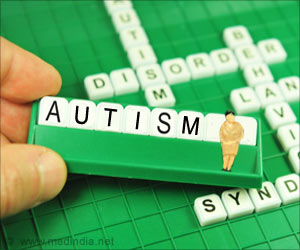
‘Some of the patients with Autism Spectrum Disorder could have a dysfunction in the oxytocin system. Clinical trials with humans have demonstrated that when the amount of oxytocin is increased, there are certain aspects that improve in social interactions.’
Tweet it Now
Oxytocin is a natural hormone produced by the brain, and is involved in social behavior. The researcher said, "There have been some clinical trials with humans in which it has been demonstrated that when the amount of oxytocin is increased, there are certain aspects that improve in social interactions. Today there is as yet no treatment in autism to improve social behavior, but one of the most promising therapies for ASD is intervention in the oxytocin system." In another recent publication, the researcher showed that a mouse autism model displayed reduced levels of oxytocin in the brain and that the administering of the hormone improved social behavior. To do this, she built a viral vector, a virus that has been modified so that it is not pathogenic, in other words, it does not cause any illness, to transfer an artificial receptor to the neurons that produce oxytocin in the mouse. This technique, known as DREADD (Designer Receptors Exclusively Activated by Designer Drugs), is a widely used technique in the study of neuronal circuits- it consists of transferring an artificial receptor to the relevant neurons, which will be activated or disabled exclusively through the administering of a specific drug to study the effect.
Dr. Daniele Piomelli, a researcher at the University of California and expert in endocannabinoids, contacted Peagarikano to be able to use the vector developed by this Basque researcher in the DREADD technique in a study that has served to demonstrate that the release of oxytocin leads to an increase in the production of anandamide (an endogenous substance produced by the body and which acts on the cannabinoid receptors, the same receptors on which cannabis acts). Peagarikano said, "My involvement in this work was to share the viral vector needed for the DREADD technique and to supervise its use and offer advice to ensure that it was used successfully."
Peagarikano concluded, "The results obtained in the research suggest that one of the mechanisms by which oxytocin causes interpersonal relations to be perceived as pleasant could be through the release of anandamide. When the amount of anandamide was increased, the mice displayed a greater preference for interacting socially. When the oxytocin system is activated, both pharmacologically and through the DREADD technique, an increase in anandamide production occurs. Oxytocin is known to interact with other neurotransmitters in this system, such as serotonin and dopamine. This piece of work reveals a new component in the system, which could have implications when it comes to developing drugs for conditions affected by impairments in social behavior, such as autism, and based on the modulation of this circuit."
Source-Eurekalert













